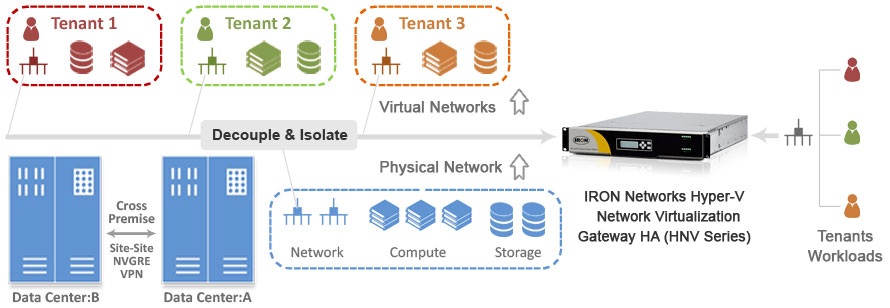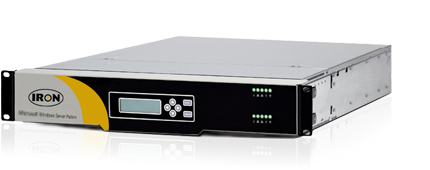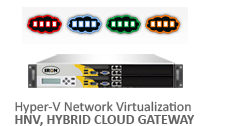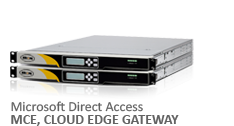HNV Series Solution DatasheetIRON Net-Gateway HNV Appliance - Microsoft Hyper-V Network Virtualization Gateway Series
Microsoft Hyper-V Network Virtualization Platform Solution Overview
Hyper-V Network Virtualization provides "Virtual Networks" to virtual machines similar to how server virtualization (hypervisor) provides "virtual machines" to the operating system. Network virtualization decouples and isolates virtual networks from the physical network infrastructure and removes the constraints of VLAN and hierarchical IP address assignment from virtual machine provisioning.
This flexibility makes it easy for customers to move workloads to IaaS clouds and efficient for hosters and datacenter administrators to manage their infrastructure, while maintaining the necessary multi-tenant isolation, security requirements, and supporting overlapping Virtual Machine IP addresses.

Enables flexible workload placement – Network isolation and IP address re-use without VLANs
Hyper-V Network Virtualization decouples the customer's virtual networks from the physical network infrastructure of the hosters, providing freedom for workload placements inside the datacenters. Virtual machine workload placement is no longer limited by the IP address assignment or VLAN isolation requirements of the physical network because it is enforced within Hyper-V hosts based on software-defined, multitenant virtualization policies.
Virtual machines from different customers with overlapping IP addresses can now be deployed on the same host server without requiring cumbersome VLAN configuration or violating the IP address hierarchy. This can streamline the migration of customer workloads into shared IaaS hosting providers, allowing customers to move those workloads without modification, which includes leaving the virtual machine IP addresses unchanged. For the hosting provider, supporting numerous customers who want to extend their existing network address space to the shared IaaS datacenter is a complex exercise of configuring and maintaining isolated VLANs for each customer to ensure the coexistence of potentially overlapping address spaces. With Hyper-V Network Virtualization, supporting overlapping addresses is made easier and requires less network reconfiguration by the hosting provider.
In addition, physical infrastructure maintenance and upgrades can be done without causing a down time of customer workloads. With Hyper-V Network Virtualization, virtual machines on a specific host, rack, subnet, VLAN, or entire cluster can be migrated without requiring renumbering or major reconfiguration.
Enables easier moves for workloads to a shared IaaS cloud
With Hyper-V Network Virtualization, IP addresses and virtual machine configurations remain unchanged. This enables IT organizations to more easily move workloads from their datacenters to a shared IaaS hosting provider with minimal reconfiguration of the workload or their infrastructure tools and policies. In cases where there is connectivity between two datacenters, IT administrators can continue to use their tools without reconfiguring them.
Enables live migration across subnets
Live migration of virtual machine workloads traditionally has been limited to the same IP subnet or VLAN because crossing subnets required the virtual machine's guest operating system to change its IP address. This address change breaks existing communication and disrupts the services running on the virtual machine. With Hyper-V Network Virtualization, workloads can be live migrated from servers running Windows Server 2012 in one subnet to servers running Windows Server 2012 in a different subnet without changing the workload IP addresses. Hyper-V Network Virtualization ensures that virtual machine location changes due to live migration are updated and synchronized among hosts that have ongoing communication with the migrated virtual machine.
Enables easier management of decoupled server and network administration
Server workload placement is simplified because migration and placement of workloads are independent of the underlying physical network configurations. Server administrators can focus on managing services and servers, and network administrators can focus on overall network infrastructure and traffic management. This enables datacenter server administrators to deploy and migrate virtual machines without renumbering the virtual machines. There is reduced overhead because Hyper-V Network Virtualization allows virtual machine placement to occur independently of network topology, reducing the need for network administrators to be involved with placements that might change the isolation boundaries.
Simplifies the network and improves server/network resource utilization
The rigidity of VLANs and the dependency of virtual machine placement on a physical network infrastructure results in overprovisioning and underutilization. By breaking the dependency, the increased flexibility of virtual machine workload placement can simplify the network management and improve server and network resource utilization. Note that Hyper-V Network Virtualization supports VLANs in the context of the physical datacenter. For example, a datacenter may want all Hyper-V Network Virtualization traffic to be on a specific VLAN.
Is compatible with existing infrastructure and emerging technology
Hyper-V Network Virtualization can be deployed in today's datacenter, yet it is compatible with emerging datacenter "flat network" technologies.
Provides for interoperability and ecosystem readiness
Hyper-V Network Virtualization supports multiple configurations for communication with existing resources, such as cross premise connectivity, storage area network (SAN), non-virtualized resource access, and so on. Microsoft is committed to working with ecosystem partners to support and enhance the experience of Hyper-V Network Virtualization in terms of performance, scalability, and manageability.









